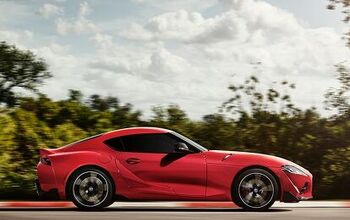Ace of Base: 2020 Toyota Yaris L

It’s been a minute since the fish-mouthed Yaris sedan has been seen in the Ace of Base arena. Closely related to the not-for-us Mazda 2, the littlest Toyota does its best to quash the bad old days of entry-level econoboxes.
Just make sure to park the thing front-in at every parking space, please.
Starting at the reasonable sum of $15,650 is the starter L trim, one of three in the range. For 2020, Toyota has decided to refurbish a few Yaris features, not the least of which is the infotainment system. Apple CarPlay and Android Auto compatibility are now standard equipment in all model grades, thanks to economies of scale and a 7-inch media system.
Air conditioning is standard, as it seems to be on all cars these days. The feds have mandated a backup camera, and that driver’s seat adjusts six different ways. The steering wheel, with audio controls, moves for reach and rake. There are also two USB ports, double the amount found in some more expensive machinery.
No matter the trim, Yaris buyers will find themselves in command of a 1.5-liter four-banger making 106 horsepower and a roughly like amount of torque. A six-speed manual is the default selection in the L, though those are 9-inch teacup brakes out back. When the infotainment screen is almost as large as the drums, it’s time for a mechanical upgrade. Maybe next year. Probably not.
Interestingly, Toyota sees fit to include a low-speed pre-collision system on all Yarii. Operating at 18 mph or less, it is intended to assist a driver if they fail to whoa up in time when the vehicle ahead of them suddenly decelerates. It’s far from Autopilot of Super Cruise but will certainly help new or young drivers, folks who are surely in the target market of this car.
Drivers should expect very nearly 40 mpg on the highway, making this one of the cheapest new cars to buy and operate. Hey, that is the Ace of Base mantra, isn’t it?
[Images: Toyota]
Not every base model has aced it. The ones which have? They help make the automotive landscape a lot better. Any others you can think of, B&B? Let us know in the comments and feel free to eviscerate our selections.
The model above is shown with American options and priced in American Dollars. Your dealer may sell for less.

Matthew buys, sells, fixes, & races cars. As a human index of auto & auction knowledge, he is fond of making money and offering loud opinions.
More by Matthew Guy
Latest Car Reviews
Read moreLatest Product Reviews
Read moreRecent Comments
- Redapple2 I retract my comments and apologize.
- Flashindapan I always thought these look nice. I was working at a Land Rover dealership at the time the LR3 came out and we were all impressed how much better it was then the Discovery in just about every measurable way.
- Bd2 If I were going to spend $ on a ticking time bomb, it wouldn't be for an LR4 (the least interesting of Land Rovers).
- Spectator Wild to me the US sent like $100B overseas for other peoples wars while we clammer over .1% of that money being used to promote EVs in our country.
- Spectator got a pic of that 27 inch screen? That sounds massive!



































Comments
Join the conversation
I'm curious if the MazdaConnect system in this car is configurable for color or not. The "Toyota" here has blue accents while the Mazdas I've had get red accents. I prefer red, but inquiring minds and all that. Also, I'd be curious to know what the real world mileage would be in the manual. When I had the manual Mazda3 36 combined was not uncommon - I don't drive the auto often enough to have a good estimate, and a combined total of 33 wasn't uncommon in the Mazda6 - with a personal best of 39.7. I wonder if mid-40s is a more accurate guess. Also, can the front clip from a Demio be grafted on?
Art: Thank you.